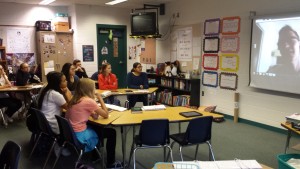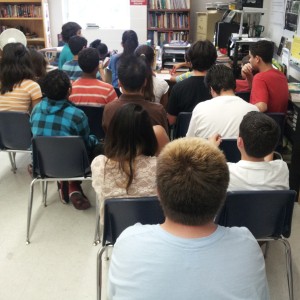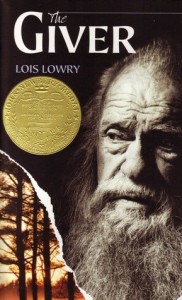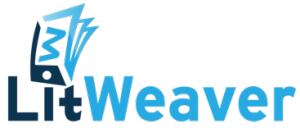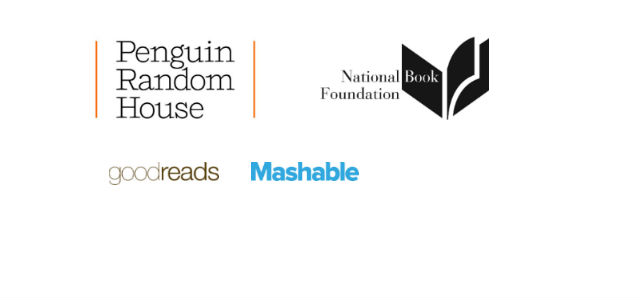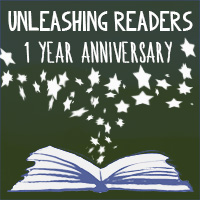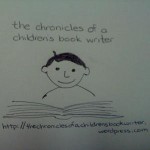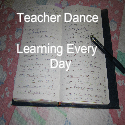When I entered my first EdCamp in late January. First, let me tell you how much I loved the experience! It was a PD run by, led, and created by teachers. You were able to choose your breakout sessions and there was such a variety!
I, personally, hadn’t planned on presenting. I wanted to just lurk and see what EdCamp was like. But then Dr. Beth Scanlon, my Adolescent Literature teacher from UCF and reading coach at a local high school, and Lee Ann Spilanne, a friend and language arts teacher at a local high school, came to me and said the words that I could not resist: Share your love of reading. With those words, I jumped in and signed up to present.
I decided to focus on the two things that I get asked the most by other teachers: How do you read so much? & How do you get your students to read so much? Since they go hand-in-hand, I thought it was a perfect thing to talk about. This is what I shared:
1. Stop reading books you do not enjoy!
Stop it. It isn’t worth it. There are millions of books out there. Books you will enjoy. Find some of them and pick them up and devour them and love them. Then share them!
2. Stop making your students read books they don’t enjoy!
Stop it. It isn’t worth it. There are millions of books out there. Books your student will enjoy. Help them find them and pick them up and devour them and love them. This is why you have to read–to help them find these books they’ll love. One of the things I do with my students is have them fill out an interest inventory and book survey at the beginning of the year to help get to know them. This allows me to give specific recommendations to each of them from the very first week. And if they don’t like a book? Let them stop and move on.
3. Read books that you can share with your students.
This makes it so that your reading is two folds. Not only is it enjoyable to you, but it gives your reading a whole new purpose. You love being an educator, so reading for your job will give you even more motivation to pick up those books your students will love. Oh, and picture books, chapter books, middle grade novels, young adult novels, and graphic novels are just so enjoyable! You’ll love them–you’ll see!
4. There is time to read.
I know this sounds harsh, but stop making excuses. If reading is a priority then there is time to read. All you have to do is set time aside. Just like you ask your students to do. My reading time is right before bed. Although I am not a perfect reader, and that is okay too! (see #6), I try to make daily reading a priority. Even if it is only 15, 20, or 30 minutes a day; there is time to read.
5. Join a reading community.
This is what really changed my reading life. I found my reading community which not only gives me other educators to talk about books with, but I also get recommendations of the best books to read. At first, I only joined Goodreads and began building more book knowledge, but then expanding my reading community came in three folds. First, I became active on Twitter taking part in chats like #titletalk and meeting educators from all over the world. They became my PLN (professional learning network). These “tweeps” have grown to become true friends, and I would not be the reader or educator I am without them. Second, I started blogging and launched It’s Monday! What Are You Reading? where 30+ bloggers connect weekly and talk about what books they are reading and enjoying. Finally, I joined The Assembly on Literature for Adolescents of the NCTE where I found true advocates for adolescent literature. I then became active first serving on the Walden Award Committee and taking part in the workshop and now I am on the Executive Board and the Public Relations committee. All of this allowed me to become more involved in the best books for adolescents.
6. Don’t be too hard on yourself.
Did you not read on Monday? Did you take 2 weeks to finish a book because you were busy? Did you abandon the last 3 books you started? Yes? That’s okay! Whenever you start feeling down on yourself, just remember me saying: It is okay! It happens. We all have reading slumps! Just pick yourself up and keep going. It will end if you keep fighting it.
7. Have a classroom library.
Having a classroom library shows your students that reading and books are part of your class culture. When you walk into a room where walls are covered in books and bookshelves, you know where the priorities lie. From my own surveys with my students, I know that having a classroom library also helps my students read more than they do in other classes. They don’t have to worry about library due dates, they have the books right in their classroom, and they have a teacher that will help them find the right book for them. See some pointers I gave at NCTE in 2013 on building a classroom library here. I also shared the website, Booksource, that I use for inventorying and checking in/checking out books of my classroom library.
I’m going to be writing an entire post about the importance of a classroom library at a later date (and I’ll add the post link here) which was inspired by Sarah Anderson. On her blog, she explains how she creates and manages her classroom library as well as why not having a classroom library is not an option.
8. Allow time for independent reading and talking about books in your class.
This builds right off of #7. If you think reading is important, then allow time for it for your students just as you are allowing time for it in your life. Also, giving students time to talk to you or each other will really push their reading further!
9. Don’t force reading logs or book expectations on your students.
Don’t kill reading for them! No one is checking up on you or limiting what you read! Yes, I know, you have a college degree already, but think back to when you were a kid. Did you enjoy logging your reading? If someone told you you couldn’t read your favorite book, how would you have reacted?
10. Have fun!
This is the most important thing! Reading is supposed to be enjoyable–let it be.
Happy reading!
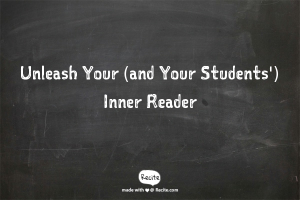

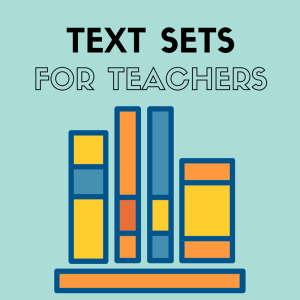

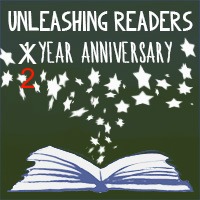

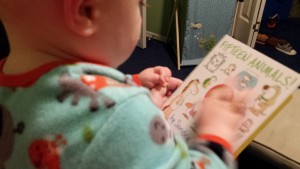
 ” Wow! A student who graduated from an IB high school just said I was the greatest teacher she ever had. That really blew me away (and made me tear up).
” Wow! A student who graduated from an IB high school just said I was the greatest teacher she ever had. That really blew me away (and made me tear up). 